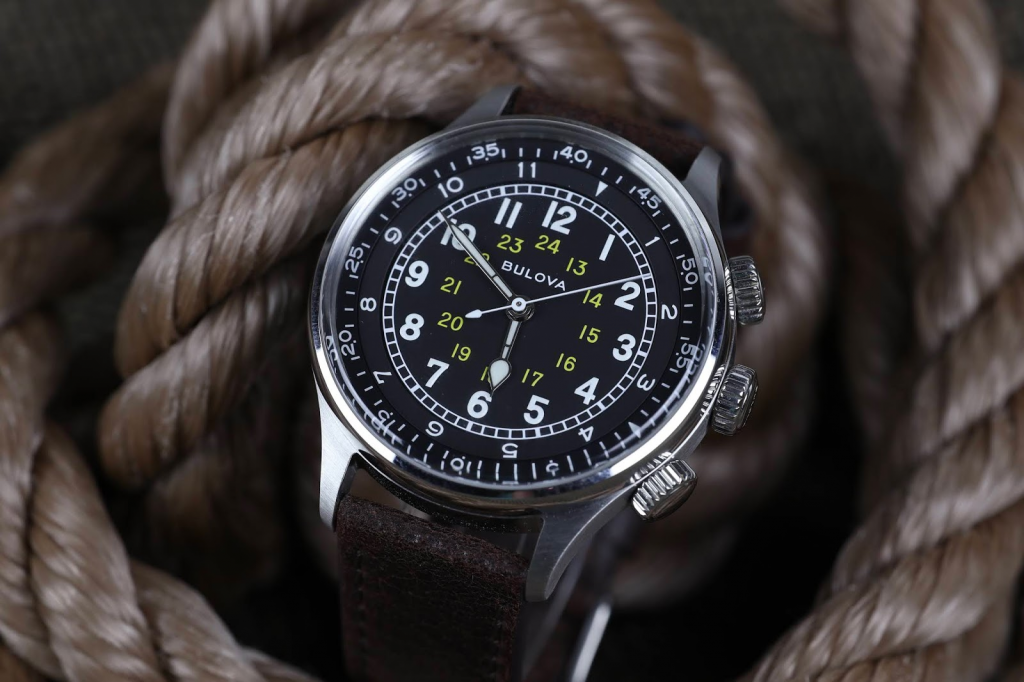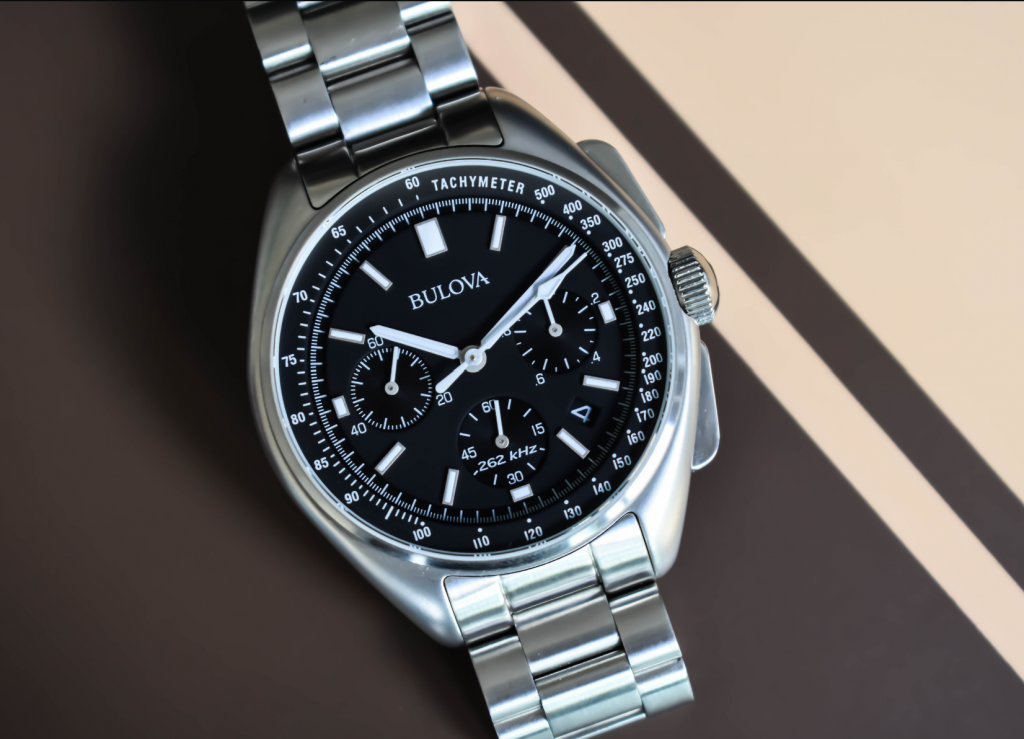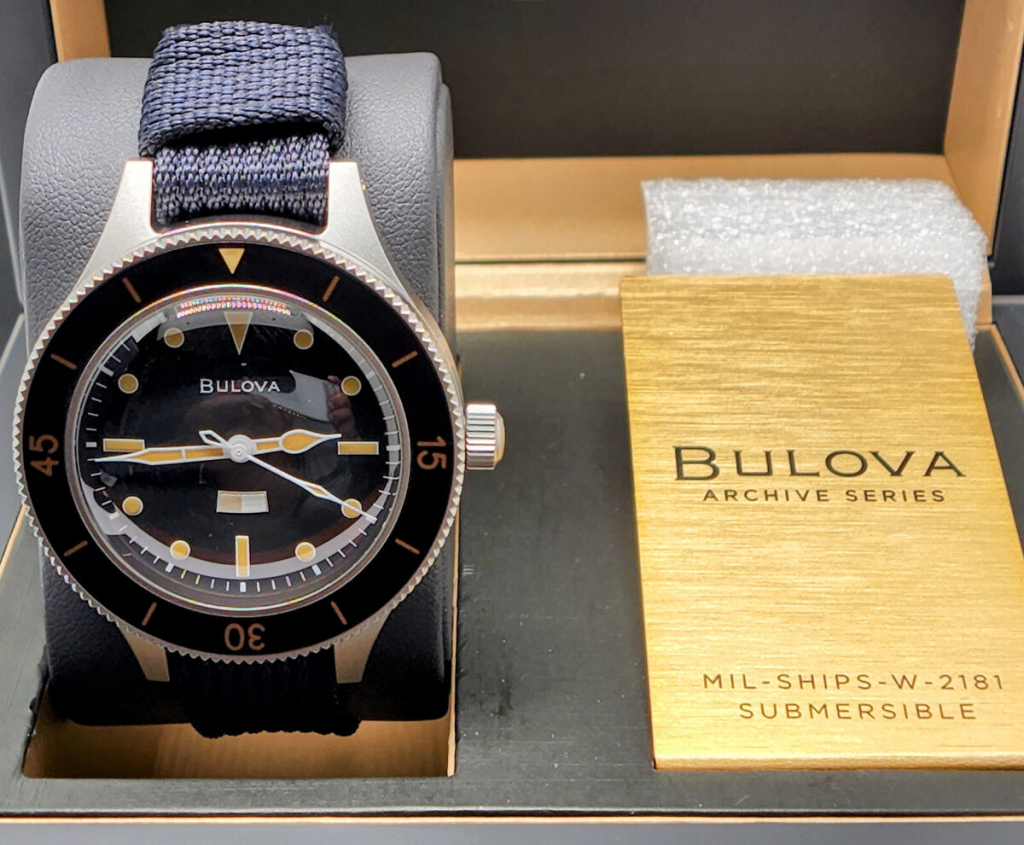The Bulova reissue A-15 pilots watch.
A modern take on a military watch that was never issued ..

Courtesy of Time Bum
I feel sorry for Bulova sometimes, (don’t get me wrong I love the brand and have 5 modern and 2 vintage Accutron’s.) but they appear to be the company that on 3 occasions missed out on the”golden ticket” I’ll explain.
We have the Lunar Pilot which missed out to Omega on being the “official” moonwatch and only got recognition due to an uncharacteristic failure of the Omega on Apollo 15 that caused Pilot David Scott to use his personal Bulova test watch, this watch became the blueprint for the watch in 2015.

Then we have the Mil-Ships that In 1955, in response to a new type of military diver that demanded a more substantial watch, the Bureau of Ships issued an RFP for a new watch: MIL-SHIPS-W-2181. In 1957, Bulova sent three prototypes for consideration and tests were favourable, But suddenly, Bulova dropped it. They never produced the watch other than the prototypes. There are a number of conjectured reasons why, none confirmed. One theory was that the military only wanted a small number and Bulova expected a larger contract. there were 12 watches made in total and the re-issue (if that term can be used) was introduced in 2021.

And finally, today’s subject is the A-15 Pilots watch. According to Ziggy Wesolowski’s book ‘Military Timepieces 1880 – 1990’, in June 1943 the USAAF (Air Technical Service Command, Wright Field, Dayton, Ohio) initiated a project to test a new pilot watch developed by the Bulova Watch Company. The watch, a chronograph type incorporating a rim accumulator provides sixty minutes of total elapsed time. The inside hour accumulator dial with the hourly markings 1 to 11 and the index for 12 is moved by turning the small stem on the case just clockwise of the winding stem. The outside minute accumulator dial with five-minute markings 5 to 55 and the index mark for 0 or 60 is moved by turning the small stem on the case counter-clockwise of the main winding stem.
At the beginning of any period for which it is desired to measure the elapsed time, the following procedures are to be followed:
- Set the minute accumulator dial index opposite the minute hand.
- Set the hour accumulator dial index opposite the hour hand
At the end of the period for which it is desired to measure the elapsed time one merely reads the elapsed hours opposite the hour hand on the hour accumulator dial and the elapsed minutes opposite the minute hand on the minute accumulator dial. Using the pair crowns at 2 and 4 hours, a pilot was supposed to place the white triangles on the hour and minute scales opposite the hour and minute hands respectively. As time passed, it would take him just a glance, to see how much time passed after take-off. Based on historical documents obtained, it appears that approximately 500 Type A-15 watches were service tested both in theatres of operation (Europe, Asia and the Pacific) as well as the US in late 1944 and early 1945. All service tests on the Type A-15 watch were completed by 1 May 1945. The AAF Board subsequently decided that there was no military requirement for the Type A-15. So, according to Ziggy Wesolowski, Type A-15 was tested but never adopted. However, the Air Technical Service Command instructed some locations after testing that the Type A-15 could be issued to pilots on the same basis as the Type A-11 hack watch. Therefore, at least some of the test Bulova Type A-15 watches were subsequently issued, and most likely to USAAF pilots involved in military operations in Europe, Asia and the Pacific.

A Vintage 1944 A-15 Picture courtesy of MWR
So how close is this to the original you ask? well pretty damn close! the 1944 watch is 39.8mm and the reissue is 42mm we don’t get a hand-wind movement now but a Miyota automatic. the crystal is now sapphire, but the crowns all function the same and the dial layout looks almost identical. this may very well be my Bulova number 8.

Leave a Reply